Tsar Fedor Alexseevich in front of the Image of Edessa (Holy Image of the Saviour Not Made by Hands)
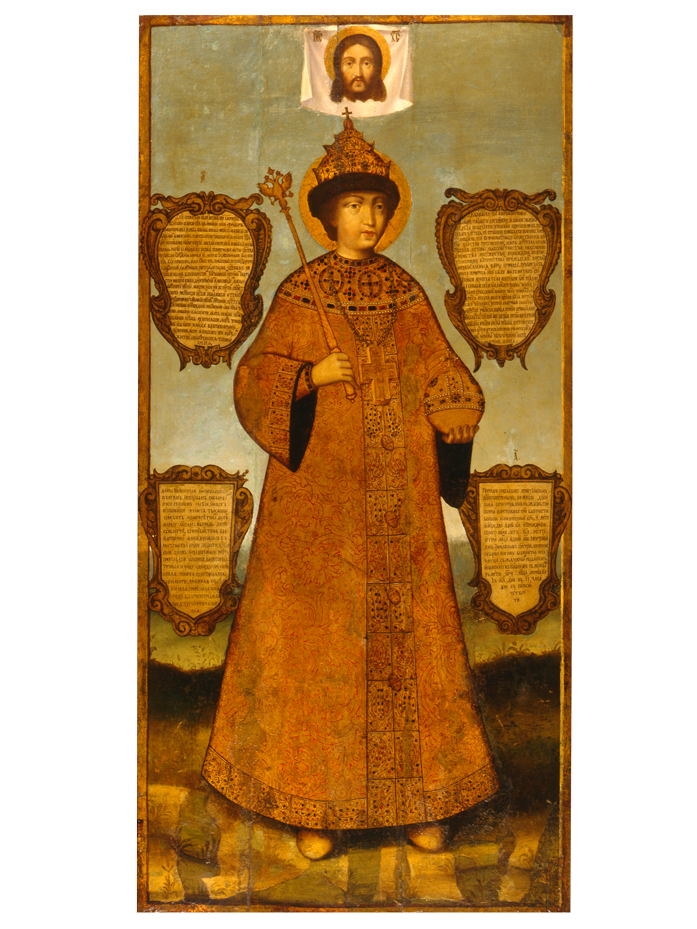
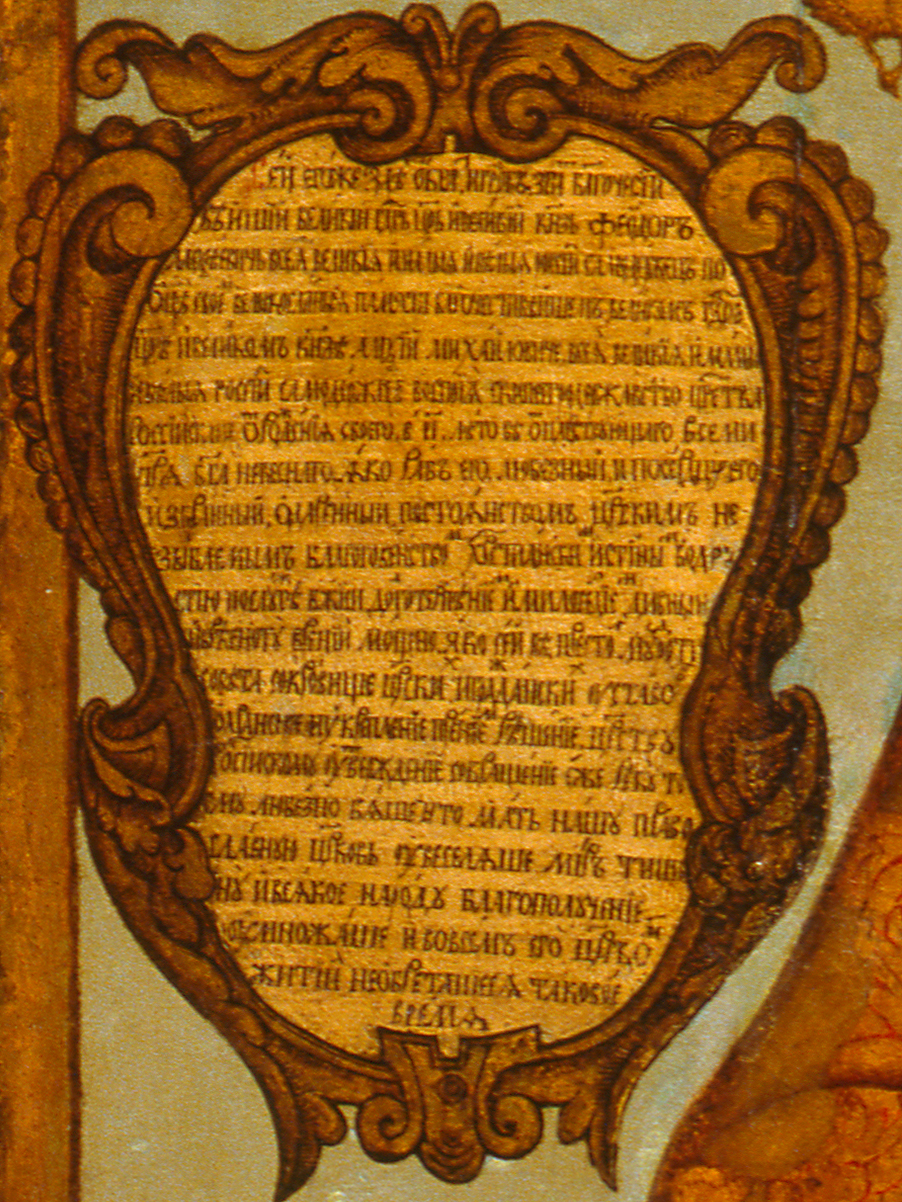
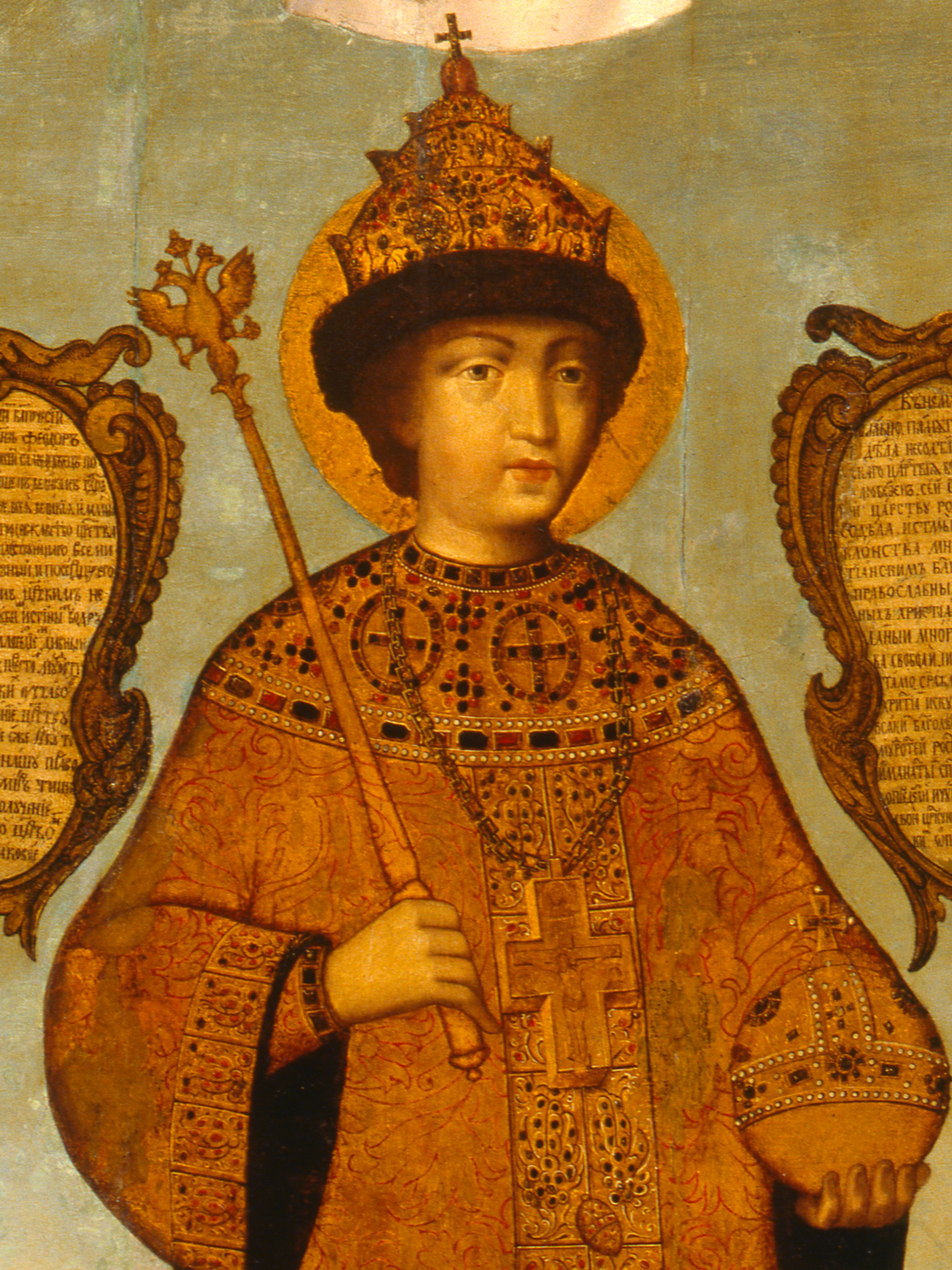
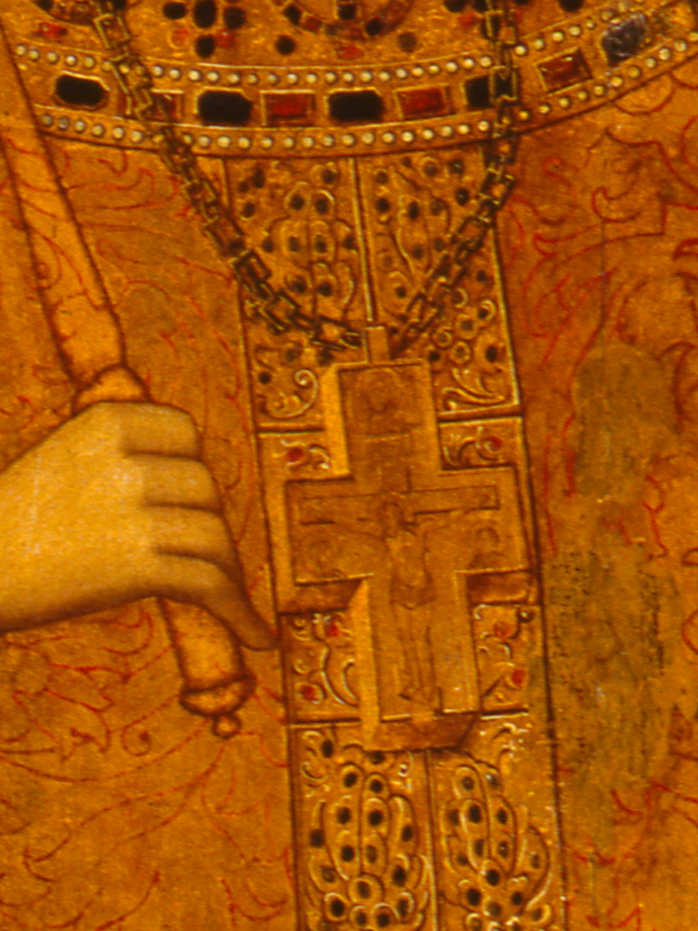
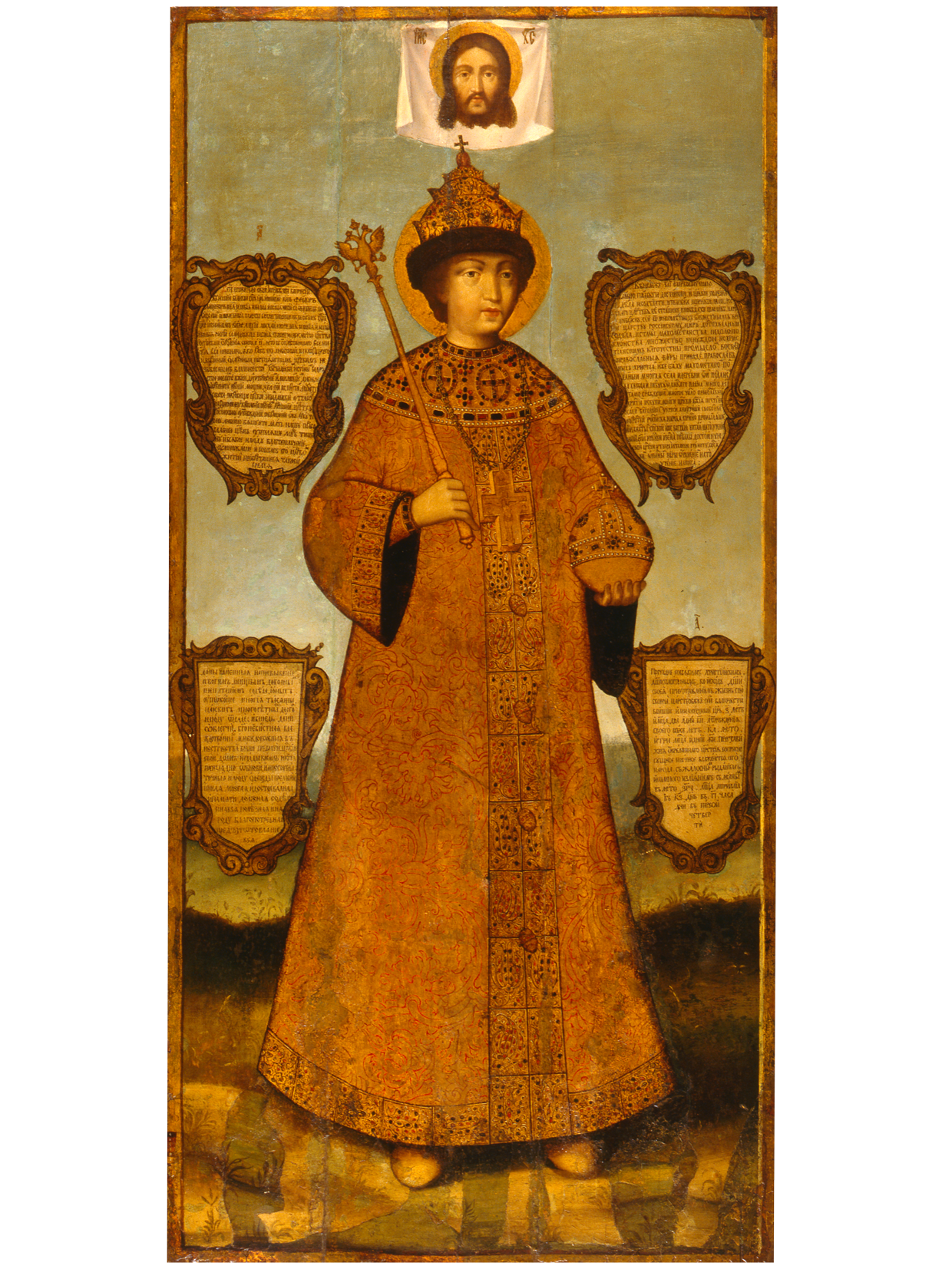
The tumulary portrait of Tsar Feodor Alekseevich (1661–1682, Tsar from 1676) was made for the Archangel Cathedral of the Moscow Kremlin. According to the tradition of the “portrait” gallery in the grand-ducal and tsars’ necropolis, the portrait was placed in front of the tomb of the tsar in the north-west pillar of the Archangel Cathedral of the Moscow Kremlin. Tsar Fedor Alekseevich is depicted in a golden ceremonial vestment, called the “big attire (dress)”, with tsar’s regalia and a large cross on his chest. On the cartouches surrounding the image of the tsar, the most significant acts of his short reign are set forth. They include the abolition of centuries-old localism and the related to it reform of the military system, the reform of public administration and the tax system, the project of the first higher education institution by the example of European universities. The tsar made peace with the Turks (1681), abolished mutilation executions, instituted almshouses and state orphanages with teaching literacy and craft.
More information...Russian parsuna (portrait on board) is the art of the medieval period that with its "ceremonial statics" is close to the style of the icon. But in this case, the icon’s "life-likeness" is a fine stylization and artistic technique of the craftsman familiar with the tradition of European classical painting. The uniqueness of the tumulary portrait of Fedor Alekseevich is in the representation of personal traits that go beyond the sacral sphere of culture.
The subject of the author's performance remains open. Analysis of the business documentation of the Armoury Chamber allows researchers to consider the work was made by Ivan Bezmin, the author of the solemn lifetime portrait of the third tsar of the Romanovs, or by Bogdan (font name - Ivan) Saltanov, who got the order from tsarevna Sofia. Fedor Alekseevich himself showed deep interest in the work of craftsmen of the Armoury Chamber, spoke personally with artists, discussed their projects. A "picturesque" branch of the Armoury Chamber was organized during his reign.
Without a doubt, the portrait was made by court painters that is evidenced by the use of old craftsmen technique of performing classical painting on colored excipients, landscape background, and physiognomic similarity. The graphic portrait of the tsar recently discovered in the Hermitage collection, made by an unknown Dutch artist, contains from life observations and fine psychological characteristics of the model. The picture apparently became a sample for a ceremonial portrait (it is mentioned in documents and has come down to our time only in later copies), which served as a sample for a tumulary portrait of an ideal, pious tsar-youth. Among the iconic, "Byzantine" features, first of all a childish slightly swollen face (although the tsar died at 21) draws attention, resembling the adolescent face on an icon. The conventionality of the medieval form here serves an exalted idealization of the model - creating the image of a beautiful young man in his holy innocence, evoking associations with the face of murdered Prince Dmitry, patron of the tsar’s family, whose relics are also kept in the Archangel Cathedral.




